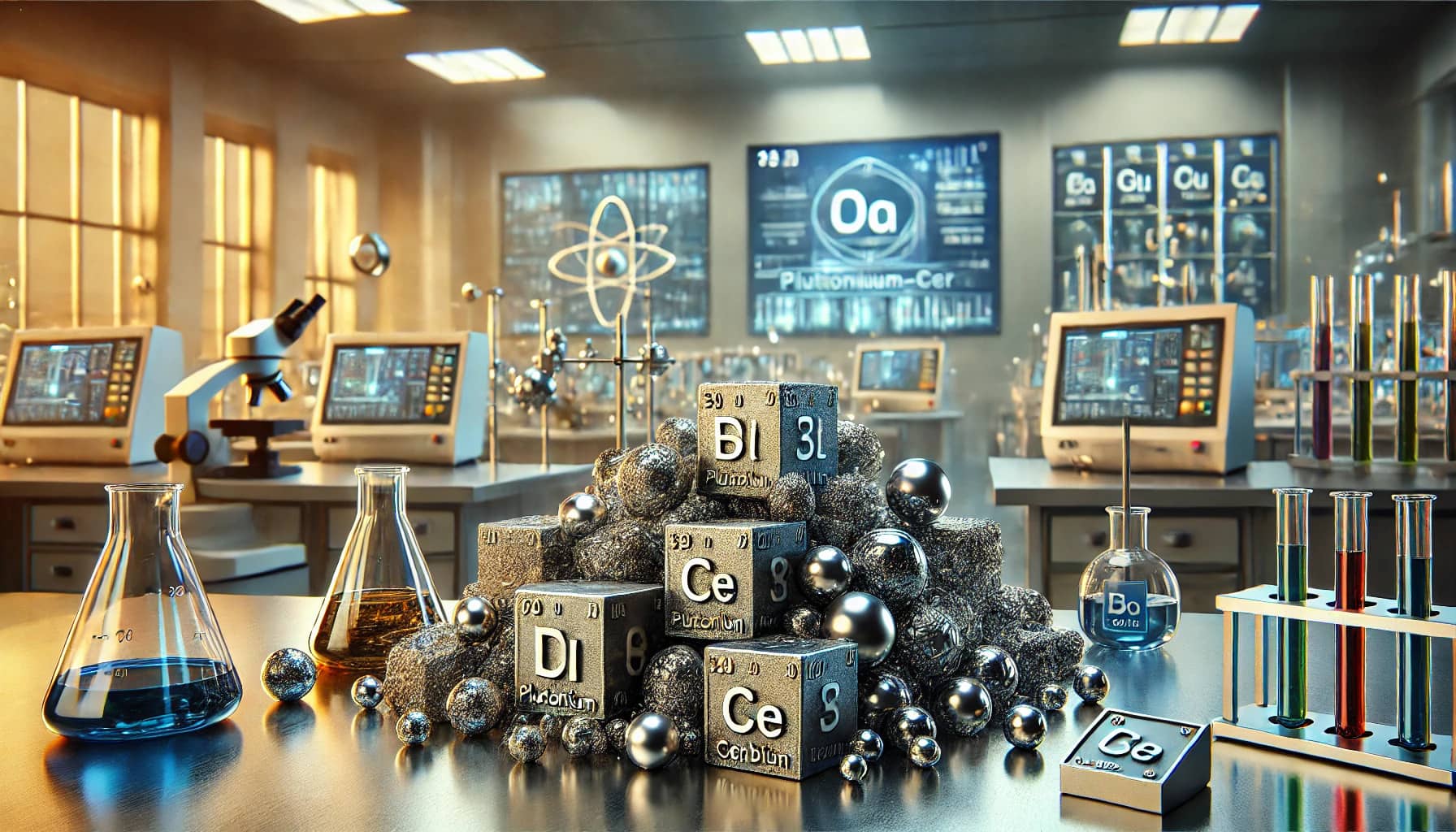
Plutonium–Cerium–Cobalt is a fascinating alloy with unique properties that make it a subject of intense study. This combination of elements brings together the radioactive nature of plutonium, the rare earth characteristics of cerium, and the magnetic properties of cobalt. Why is this alloy so special? It’s because each element contributes distinct traits that result in a material with potential applications in nuclear science, advanced electronics, and even medical technology. Understanding this alloy can help us grasp how different elements interact to create new materials with enhanced capabilities. Ready to dive into the world of Plutonium–Cerium–Cobalt? Let’s explore 30 intriguing facts about this remarkable alloy!
Key Takeaways:
- Plutonium, cerium, and cobalt are fascinating elements with unique properties and diverse uses. Plutonium is highly radioactive and used in nuclear weapons, while cerium is non-toxic and widely used in various applications. Cobalt, known for its vibrant blue color, is essential for human health and has a crucial role in industries such as battery production and medical treatments.
Plutonium: The Mysterious Element
Plutonium is a fascinating element with a complex history and unique properties. Let's dive into some intriguing facts about this heavy metal.
-
Discovered in 1940, plutonium was first identified by scientists Edwin McMillan and Glenn Seaborg at the University of California, Berkeley.
-
Named after Pluto, the dwarf planet, following the tradition of naming elements after celestial bodies.
-
Highly radioactive, plutonium emits alpha particles, which can be harmful if ingested or inhaled.
-
Used in nuclear weapons, plutonium-239 is a key component in the production of atomic bombs.
-
Nuclear reactors also utilize plutonium as a fuel source, particularly in mixed oxide (MOX) fuel.
-
Half-life of plutonium-239 is 24,100 years, meaning it remains radioactive for thousands of years.
-
Plutonium-238 is used in space exploration to power spacecraft, such as the Mars rovers.
-
Metallic plutonium has six different allotropes, or structural forms, which change with temperature and pressure.
-
Silvery-gray appearance when freshly cut, but it tarnishes quickly when exposed to air.
-
Highly toxic, plutonium can cause severe health issues, including cancer, if not handled properly.
Cerium: The Versatile Metal
Cerium is a rare earth element with a wide range of applications. Here are some interesting facts about this versatile metal.
-
Discovered in 1803 by Swedish chemists Jöns Jakob Berzelius and Wilhelm Hisinger, and independently by German chemist Martin Heinrich Klaproth.
-
Named after Ceres, the dwarf planet, which was discovered just two years earlier.
-
Most abundant rare earth element, making up about 0.0046% of the Earth's crust.
-
Used in catalytic converters to reduce emissions from vehicles by converting harmful gases into less harmful substances.
-
Glass polishing is another common use, with cerium oxide being a key ingredient in polishing compounds.
-
Flint for lighters contains cerium, which produces sparks when struck against steel.
-
Alloying agent in metals, improving their strength and resistance to oxidation.
-
Cerium oxide nanoparticles are used in various applications, including fuel cells and as an additive in diesel fuel to reduce emissions.
-
Yellow color in glass is often due to the presence of cerium, which can absorb ultraviolet light.
-
Non-toxic compared to many other metals, making it safer for use in various applications.
Cobalt: The Blue Element
Cobalt is a transition metal known for its vibrant blue color and essential role in various industries. Let's explore some fascinating facts about cobalt.
-
Discovered in 1735 by Swedish chemist Georg Brandt, who demonstrated that cobalt was the source of the blue color in glass.
-
Named after the German word "kobalt", meaning goblin, due to the toxic arsenic-containing ores that were often associated with it.
-
Essential trace element for humans and animals, playing a crucial role in the production of vitamin B12.
-
Used in superalloys, which are materials that can withstand high temperatures and are used in jet engines and gas turbines.
-
Cobalt blue pigment has been used for centuries in ceramics, glass, and paints.
-
Rechargeable batteries, particularly lithium-ion batteries, often contain cobalt to improve their performance and longevity.
-
Magnetic properties make cobalt an important component in the production of permanent magnets.
-
Cobalt-60 is a radioactive isotope used in medical treatments, such as cancer radiotherapy, and in industrial applications like sterilizing medical equipment.
-
Cobalt mining is concentrated in the Democratic Republic of Congo, which produces over 60% of the world's supply.
-
Environmental concerns have arisen due to the mining and processing of cobalt, leading to efforts to find more sustainable and ethical sources.
Final Thoughts on Plutonium–Cerium–Cobalt
Plutonium, cerium, and cobalt each hold unique places in the world of elements. Plutonium, known for its role in nuclear energy, has both power and danger. Cerium, often used in alloys and glass polishing, shows versatility in everyday applications. Cobalt, essential for batteries and pigments, drives modern technology.
Understanding these elements helps appreciate their impact on our lives. From powering cities to enhancing gadgets, they shape our world in ways we might not always see. Next time you use a smartphone or see a polished glass, remember the elements behind the scenes.
Learning about these elements not only satisfies curiosity but also highlights the importance of science in daily life. Keep exploring, stay curious, and who knows what other fascinating facts you'll uncover about the elements around us.
Frequently Asked Questions
Was this page helpful?
Our commitment to delivering trustworthy and engaging content is at the heart of what we do. Each fact on our site is contributed by real users like you, bringing a wealth of diverse insights and information. To ensure the highest standards of accuracy and reliability, our dedicated editors meticulously review each submission. This process guarantees that the facts we share are not only fascinating but also credible. Trust in our commitment to quality and authenticity as you explore and learn with us.
